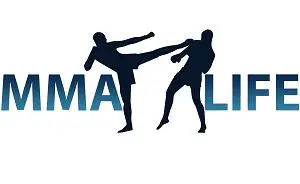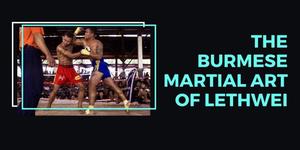The martial arts of Muay Thai and Tae Kwon Do are two very different art forms with their own unique stories. In this article, we’re going to take a look at how these two disciplines match up. We’ve already spoken about the history of Tae Kwon Do before, but we will still detail some aspects to compare it to Muay Thai.
Origins of Muay Thai
The art of Muay Thai, or Thai boxing, is the cultural martial art of Thailand and dates back several hundred years. The necessity for close combat developed Muay Thai. For instance, it uses the entire body as a weapon. Unfortunately, the exact origins of the Muay Thai are unknown.

The Burmese invaded Ayudhaya, the capital of Siam (Thailand), in the 14th century. A lot of martial arts history was lost. However, what is known is that it originated in southern China and migrated through various tribes and took root with one of the major tribes, the Siamese (Thai).
Years of tribal wars honed this martial art with soldiers and fathers passing down fighting techniques. Thus, Muay Thai grew into an effective fighting system and is the national sport and martial art of Thailand. It represents the culture of the country and is still one of the most effective fighting systems practiced by millions across the world.
Origins of Tae Kwon Do
The national martial art of Korea is less than a hundred years old, but it’s roots date back to the three kingdoms of Korea. To illustrate, artifacts depicted that soldiers of the time used a fighting style similar to modern-day Tae Kwon Do.
Foreign nations constantly occupied Korea throughout its history. For instance, countries like Japan tried to erase the culture of Korea and implement their own. Tae Kwon Do was formed and grew into a popular martial art after Korea regained independence in 1945
Philosophy of Muay Thai
Muay Thai is not just about turning your body into a weapon. In fact, it has a deeper meaning. The philosophy of Muay Thai shares similar aspects to the philosophy of Tae Kwon Do that go beyond just training.
Muay Thai will teach you principles that will help you live a better life.
- Mindfulness: You’re taught to be present in the moment. Paying attention to everything that is happening in front of you and the task ahead.
- Respect: Having respect for yourself, family, friends, and the art of Muay Thai.
- Relaxation: You must relax and think calmly. Above all, conserve your energy for the precise moment to act.
- Repetition: To get better at any skill, you must continue practicing. Certainly, through repetition, you will always get better if you put time and effort into the action.
Philosophy of Tae Kwon Do
Just like in Muay Thai, the philosophy of Tae Kwon Do teaches principles that help practitioners live better lives.
Training will teach you these FIVE tenets:
- Ye-ui (Courtesy): Show courtesy and respect to everyone and conduct yourself in a respectful way in/outside of the dojang.
- Yeom-chi (Integrity): Learn what is right and wrong and to have the integrity stand up for what you know is right.
- In-nae (Perseverance): Persevere and strive to reach your goal until you achieve it.
- Geuk-gi (Self-Control): Have control over your physical and mental actions.
- Baek-jeol-bul-gul (Indomitable Spirit ): Have the courage to stand up for what you believe in, no matter the odds.
Techniques of Muay Thai
Muay Thai is known as “the art of 8 limbs”. And, there is a good reason behind that. Thai boxing uses all eight limbs when attacking and defending. Mixing combos of punches, kicks, knees, and elbows together while maintaining a solid defense against enemy attacks.
- Choks (Punches): Thai Boxing has similar traits to western boxing. For example, using the front hand to test the range and set up power punches.
- Soks Elbows): These strikes generally come from short-range and are designed to either slash or smash an opponent.
- Teeps (Front Kicks): Teeps are used to attack the chest or face of an opponent. Likewise, they are used for stopping an opponent’s attack or breaking their rhythm and balance.
- Te Chiang (Roundhouse Kick): Kicks to the legs, body, and head using the bottom of your shins.
- Ti Khao (Knee): This refers to knee strikes that either come from the clinch or jumping and flying attacks.
- Chap Ko (Clinch): Clinching is a defense to control an opponent to set up close-range strikes and takedowns.
Techniques of Tae Kwon Do
Tae Kwon Do techniques are vastly different from Muay Thai techniques. In particular, they are predominantly reliant on long-range kicks to attack an opponent’s head and midsection. However, students learn to perform the techniques with speed and precision.
- Sidekicks/Front Kicks: Sidekicks are thrown with your foot horizontal, and front kicks are thrown when the foot vertical. They are used to keep range and strike an opponent from a distance.
- Punches: Punches are used to generally set up kicks, strikes like ridge hand are used often.
- Roundhouse kick: Snapping kicks with foot/lower shin to the side of an opponent’s face or body.
- Spinning/Jumping kicks: Spinning or jumping kicks are the most powerful kicks in Tae Kwon Do. The act of spinning or jumping accelerates the power to deliver a devastating attack.
Forms of Muay Thai
The style of a Thai boxer breeds the name given to them.
- Muay Mat: A Muay Mat has an aggressive style looking to deliver damage as quickly as possible. Therefore, this type of fighter looks forward to landing heavy shots.
- Muay Tae: This type of fighter predominantly uses a variety of kicks to attack an opponent.
- Muay Khao: A fighter that prefers to throw knee strikes.
- Muay Femur: A precise fighter that uses a combination of all techniques that can adapt to an opponent’s style.
Forms of Tae Kwon Do
In Tae Kwon Do, there are different organizations, and each teaches a different number of forms. In fact, Five major organizations are teaching students 24-30 different forms.
For reference, the five organizations are:
- Kukkiwon
- Jhoon Rhee Forms
- American Tae Kwon Do Association
- Global Tae Kwon Do Federation
- International Tae Kwon Do Federation.
Weapons Used in Muay Thai and Tae Kwon Do
Generally, these two martial arts are used for unarmed combat, making the body a weapon. These martial arts were developed for when you are unarmed or if your weapon failed.
Although, there are hybrid styles of both that implement the use of weapons like Spears, Swords, knives, bo staffs, etc.
Ranking Systems
Another difference between these two martial arts is the ranking systems. Tae Kwon Do goes by a belt system that goes from white to black with different intermediate colors in between. Muay Thai does not have a belt system, but organizations like the World Thai Boxing Association (WTBA) use colored armbands to signify rank.
Which is More Effective In a Real-Life Situation?
In a real-life situation, Muay Thai has the edge over Tae Kwon Do for a few reasons.
More attacks: In Tae Kwon Do, there are only punches and kicks to the upper body. Muay Thai teaches multiple attacks to the entire body of an opponent. Mixing attacks to the head, body, and legs using all your limbs is harder to defend.
Better defense: Generally, the defense for Tae Kwon Do is to keep the distance and don’t get hit. On the other hand, Muay Thai is the more defensive martial art using slips, clinches, and blocks to defend an opponent’s attacks.
Clinch/Wrestling: In most fights, grappling occurs, and there is no grappling in Tae Kwon Do. Muay Thai teaches you to fight from the clinch while setting up strikes and takedowns.
These three things make Muay Thai a more effective martial art, but Tae Kwon Do does have great techniques. For instance, learning a Tae Kwon Do turning sidekick or 360 roundhouse are great techniques to learn that will improve a martial artist’s skill.
Final Thoughts
Both Tae Kwon Do and Muay Thai are great martial arts to practice. They both provide self-defense while instilling discipline to live a more peaceful life. Remember, learning either or both would be a benefit to your life.
References




